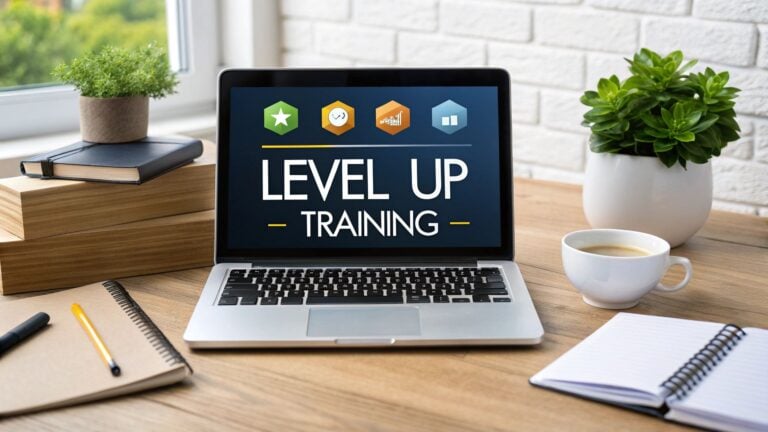Webinar Feedback 101: Examples and Response Strategies

In today’s digital landscape, webinars have emerged as powerful platforms for knowledge sharing, audience engagement, and business growth. These virtual events allow presenters to connect with participants regardless of geographical boundaries, offering valuable insights while simultaneously building brand awareness.
However, the true potential of webinars can only be realized when organizers understand how their content resonates with attendees. This is where structured feedback collection becomes invaluable.
The Strategic Importance of Webinar Feedback
Collecting participant feedback isn’t merely a post-event formality, it represents a critical learning opportunity that can transform your future webinars.
When approached systematically, feedback provides concrete data about what worked well and what requires improvement. This information serves as the foundation for data-driven decisions that can elevate your webinar quality, increase engagement rates, and ultimately drive better results for your organization.
Designing Effective Feedback Questions
The quality of feedback you receive depends significantly on the questions you ask. Let’s explore some essential questions that can yield meaningful insights:
1. Overall Satisfaction Assessment
Key Question:
“How satisfied were you with the webinar on a scale of 1-10?”
This quantitative measure provides an immediate gauge of attendee satisfaction. However, the real value comes from following this rating question with qualitative inquiries like “What specifically contributed to your rating?” or “Which aspects exceeded or fell short of your expectations?”
The combination of numerical ratings with descriptive explanations allows you to identify patterns across responses while understanding the reasoning behind those ratings. This dual approach provides both measurable metrics for tracking improvement over time and specific insights that guide your enhancement efforts.
2. Content Relevance and Applicability
Key Question:
“How relevant was the content to your professional needs or interests?”
The most technically impressive webinar will fall flat if its content doesn’t align with attendee needs. This question helps determine whether your material resonated with your audience’s practical concerns.
Consider supplementing this with forward-looking questions such as “What topics would you find valuable in future webinars?” This not only demonstrates your commitment to serving attendee interests but also provides a ready-made list of potential webinar topics that already have a confirmed audience.
3. Presenter Effectiveness
Key Question:
“How would you rate the presenter’s knowledge, clarity, and delivery?”
The presenter serves as the human connection between your content and your audience. Even outstanding material can be undermined by poor delivery, while skilled presenters can elevate straightforward content into a memorable experience.
For multi-presenter webinars, consider asking for specific feedback on each speaker. This granularity helps identify individual strengths and growth opportunities, allowing you to match presenters with appropriate topics or provide targeted coaching where needed.
4. Technical Experience Assessment
Key Question:
“Did you encounter any technical difficulties during the webinar? If so, please describe them.”
Technical issues can significantly impact attendee experience regardless of content quality. Identifying specific problems—whether related to audio clarity, visual presentations, platform functionality, or access procedures—allows you to address these issues systematically.
Consider asking about specific technical elements such as video quality, audio clarity, screen sharing visibility, and platform navigation ease. This detailed feedback helps prioritize technical improvements for future events.
5. Engagement Evaluation
Key Question:
“How engaging did you find the webinar content and presentation style?”
Engagement directly correlates with information retention and attendee satisfaction. A webinar might contain valuable information but still fail if presented in a manner that doesn’t maintain audience interest.
Ask specifically about interactive elements you incorporated, such as polls, breakout discussions, Q&A segments, or hands-on demonstrations. Understanding which engagement techniques resonated with your audience helps refine your approach for future sessions.
6. Knowledge Transfer Assessment
Key Question:
“What were your three main takeaways from this webinar?”
This question reveals which aspects of your content made the strongest impression. Sometimes, attendees retain different information than what presenters considered most important, highlighting opportunities to adjust emphasis or clarity in future presentations.
The responses also help evaluate whether participants absorbed your intended key messages or whether certain points need reinforcement or different presentation approaches in the future.
7. Improvement Opportunities
Key Question:
“What specific changes would most improve our future webinars?”
This open-ended question invites attendees to become collaborative partners in your improvement journey. Their suggestions often provide innovative ideas from perspectives you might not have considered internally.
By implementing attendee suggestions in subsequent webinars, you demonstrate responsiveness that builds goodwill and encourages continued participation in your events.
Responding Effectively to Different Feedback Types
How you respond to feedback significantly impacts your relationship with attendees and your professional reputation. Here’s how to address different categories of feedback constructively:
Responding to Positive Feedback
Example Scenario: Content Quality Praise
Feedback: “Your webinar delivered exceptional value with its in-depth research and practical applications. I’ve already implemented several of the strategies you shared.”
Effective Response: “Thank you for your thoughtful feedback! We’re delighted that you found practical value in our research-based approach. We’d love to hear which strategies you’ve implemented and how they’re working for you. Your success stories help us refine our content for future sessions. We hope to see you at our upcoming webinar on [related topic].”
This response acknowledges the specific aspects the attendee appreciated, invites further engagement through sharing implementation experiences, and creates a natural opening to mention upcoming events without being overtly promotional.
Example Scenario: Presenter Effectiveness
Feedback: “The presenter demonstrated remarkable expertise while maintaining an accessible approach. Complex concepts were explained with clarity and helpful analogies.”
Effective Response: “We genuinely appreciate your comments about our presenter’s communication style. Making complex information accessible is one of our core values, and we’re pleased this came through in the presentation. If there were particular analogies or explanations you found especially helpful, we’d welcome that specific feedback to strengthen future presentations.”
This response reinforces your organizational values while inviting specific examples that can be incorporated into presenter training and content development.
Responding to Constructive Feedback
Example Scenario: Pacing Concerns
Feedback: “While the content was valuable, the presentation moved too quickly through technical sections, making it difficult to absorb all the information.”
Effective Response: “Thank you for this important observation about our pacing. We strive to balance comprehensive coverage with appropriate pacing, and your feedback helps us calibrate this balance better. We’re considering implementing periodic comprehension checks and providing supplementary materials for technical sections. Would you find either of these approaches helpful for future webinars?”
This response acknowledges the legitimate concern, explains the underlying balancing challenge, proposes specific solutions, and invites further input on those potential solutions.
Example Scenario: Request for Practical Applications
Feedback: “The theoretical foundation was solid, but I would have benefited from more real-world implementation examples across different industries.”
Effective Response: “Your feedback about needing more diverse implementation examples resonates strongly with us. We recognize that theoretical knowledge gains practical value through applied examples. For our upcoming sessions, we’re developing a more comprehensive case study library spanning multiple industries. In the meantime, we’ve just published a supplementary guide with additional real-world applications that might address this need. Would you like us to share this resource with you?”
This response validates the feedback while offering both immediate value (the supplementary guide) and demonstrating a commitment to longer-term improvement.
Responding to Critical Feedback
Example Scenario: Content Disappointment
Feedback: “The webinar fell significantly short of expectations. The content was too elementary given how the session was marketed to experienced professionals.”
Effective Response: “We sincerely apologize that our webinar didn’t meet your expectations regarding content depth. We take full responsibility for ensuring our marketing accurately reflects the technical level of each session. Your feedback helps us recognize the need to better differentiate our content tiers and provide clearer advance information about the knowledge prerequisites for each webinar. To address your immediate needs, we’d like to offer you complimentary access to our advanced-level session on this topic scheduled for next month.”
This response accepts responsibility without becoming defensive, identifies specific improvements to prevent similar issues, and offers concrete remediation to the disappointed attendee.
Your webinar feedback is a powerful tool for improvement. By paying attention to what your audience says – whether it’s praise, suggestions, or criticism – you can make your future webinars even better. Use this feedback to refine your content, improve your delivery, and create an experience that truly resonates with your viewers.

![How to Effectively Host Webinars Using OBS Studio [Guide from Expert]](https://learnstream.io/wp-content/uploads/2024/08/image-768x333.png)




